#veda movie
Text


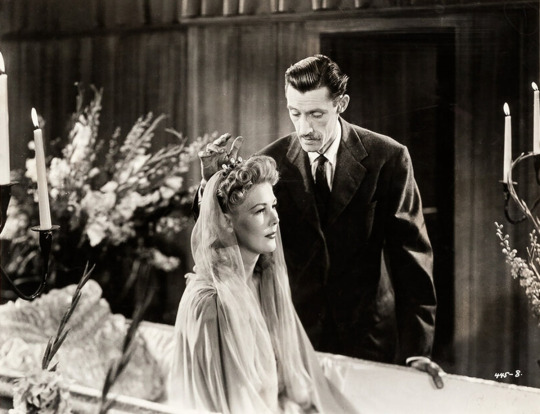
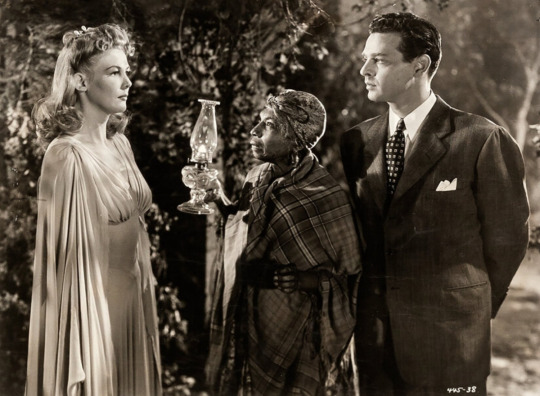
Veda Ann Borg, John Carradine, James Baskett, Robert Lowery, and Madame Sul-Te-Wan in Revenge of the Zombies (1943).
#revenge of the zombies#john carradine#veda ann borg#robert lowery#james baskett#madame sul-te-wan#1940s movies#horror
95 notes
·
View notes
Text
“With this money I can get away from you. From you and your chickens and your pies and your kitchens and everything that smells of grease. I can get away from this shack with its cheap furniture, and this town and its dollar days, and its women that wear uniforms and its men that wear overalls. You think just because you've made a little money you can get a new hairdo and some expensive clothes and turn yourself into a lady. But you can't, because you'll never be anything but a common frump, whose father lived over a grocery store and whose mother took in washing. With this money, I can get away from every rotten, stinking thing that makes me think of this place or you!”
― James M. Cain, Mildred Pierce
8 notes
·
View notes
Text







I address infinite and earnest praise to the showerer of benefits, the cherisher of all, the white-complexioned; adore the consumer of sin, with prostrations; we glorify the illustrious name of Rudra. Firm with strong limbs, assuming many forms fierce, and tawny-colored, he shines with brilliant golden ornaments; vigour is inseparable from Rudra, the supreme ruler and lord of this world.
— Rig Veda 2.33.8-9
#Windigo#Wendigo#Rudra#Shiva#Rig Veda#The Retreat#The Retreat movie#The Retreat 2020 movie#Grant Schumacher#Cernunnos#Pan#The Wild One#The Horned God#Horned God
6 notes
·
View notes
Text
Oppenheimer's Dilemma
The Hollywood movie based on the life of Oppenheimer, father of Atomic Bomb, has created a sort of flirt in the minds of the people, chiefly due to some reference therein to the Bhagavad Gita. Moviegoers (now of course, movie-watchers since movies are now available on OTT) are naturally to form opinions about the message of Gita on the basis of what has been depicted therein. In fact, there are certain people who allege that Gita is about warfare. There have been even attempts in USSR and USA seeking ban on Gita on the premise that it is about warfare and violence. In this movie also, Oppenheimer is depicted as somewhat justifying the death and destruction that took place at Hiroshima and Nagasaki following the discovery of Nuclear Bomb by alluding to Gita. Arjuna, who was arraigned against his own kith and kin in the battlefield of Kurukshetra, did not want to kill his own people, but Lord Krishna was exhorting him to do his prescribed duty and his duty was to fight and kill his opponents since Arjuna belonged to Kshatriya caste (a warrior class). Hence, the opinion that Gita is about warfare and violence simply because the Gita was said in battlefield and the backdrop was warfare or fratricide.
In my view, the said opinion is formed on the basis of superficial knowledge of Gita and is the result of bias and prejudice. Gita was said to Arjuna in the battlefield of Kurukshetra in the backdrop of war but it is not about warfare. The dilemma that Arjuna faced in the battlefield is not the dilemma of Arjuna only; it is the dilemma of common man who is torn apart by conflict and confusion, affection and aversion and the bipolarities of the worldly existence. Gita is relevant not only to Arjuna but to the common man in the society who too wages a battle of life and death and is encountered with warlike situation. Gita teaches him to rise above these polarities and to perform his prescribed duty without affection and aversion and without seeking the fruits thereof. Hence, message of Gita is relevant to all people of all ages.
But, the message of Gita is not confined only as to how the worldly duties should be performed, as some people think that Gita is all about Karma or Karma Yoga. It is far more profound and sublime. Gita is the core of Hindu (Vedanta) philosophy. It is an inquiry into the nature of man; it is an inquiry into the nature of God; it is an inquiry of Universe and the relation of man with the Universe and the God. “It is an Upanishad that is sung by the Lord; it is the science of Brahman; it is the scripture of Yoga as part of the dialogue between Sri Krishna and Arjuna...” So is given at the end of every Chapter of Gita that contains 18 Chapters.
Gita is an Upanishad. It is the core Vedanta philosophy. Vedanta means “end of Vedas”(Shruti) upon which the entire superstructure of Hindu philosophy is based. There are 108 Upanishads out of which 11 are basic, which along with Brahmsutra of Ved Vyasa (his commentary on Vedas) forms core of the Vedantic philosophy whereas Puranas are an afterthought written by rishis (spiritual scientists or poets) as an extension of Vedas and thus called ‘Smriti.’ These are in the form of story-telling mixed of mythology, history and philosophy; hence they have tremendous appeal to the masses.
Gita is science of Brahman. It defines Brahman, Ishwara (God) and relation of man with God and Brahman. The concept of Brahman is different from God. Brahman is the common substratum of Jiva (creature), Ishwara (God) and in fact the entire creation and beyond. Brahman is all pervading and is beyond time and causation. It even surpasses God. The subject matter of Vedanta or Vedic culture is in fact Brahman and not God. That is why it is said that India is a Godless culture. Lord Krishna in Gita identifies Himself at times with Ishwara (God), sometimes with Brahman and sometimes with Jiva.
The practical lesson of Gita to man consists of four yogas i.e. Karma Yoga, Raj Yoga (Yoga of Psychic control), Jnana Yoga (Yoga of Knowledge) and Bhakti Yoga (Yoga of Devotion) along with certain values, practicing which one can go beyond grief and sorrow and attains peace and tranquility. Thus, to say that Gita is about warfare and violence is to do violence against Gita itself.
Anyhow, was Oppenheimer right in justifying his creation of Atom Bomb that was followed by death and destruction caused by the use of it, by quoting from Gita? When Lord Krishna reveals his Universal form to Arjuna in XIth Chapter Verse 32 and tells Arjuna that he is ‘Kala’ which was interpreted as “Destroyer of the Universe”, he in fact was revealing the core philosophy of life and death. According to Hindu philosophy, God has basically three chief functions to perform: creation, preservation and destruction. This is remarkable feature of Hindu philosophy as death is considered logical concomitant to life and destruction to that of creation. This cycle of birth and death, creation and destruction - is endless. If creation is done by God, then by whom the destruction is done? It is God alone who creates and destroys and creates again to destroy. He is ‘Kala’ (or Kali – Mother form of God) and all are under His sway, that is, the sway of Time (Kala means “Time”). All that has been created by Time will be sucked up by Time unless one has gone beyond Time and become one with Brahman who is beyond Time and Causation. Everything that is compound has to decompose and out of the decomposed components, compound is formed again. This is the law of Nature and Science accepts it (except that God is the Controller.) Thus, according to Hindu philosophy, God is not only Creator (Brahma); Preserver (Vishnu) but He is also Destroyer (Shiva), although as Brahman, God is beyond creation and destruction; He is beyond good and evil.
When Lord Krishna says, he is ‘Kala’, he was identifying himself as Ishwara (God) and telling Arjuna that in fact He is the doer. Therefore, Arjuna should not consider himself to be the doer and incur the consequences of doership. God in fact is only the doer. Arjuna should become an instrument in the hands of God and perform his prescribed duty. And, in this way he would not incur any sin. This, in fact is Karma Yoga i.e. to become an instrument into the hands of Almighty while performing one’s duty.
According to Oppenheim, he too was acting as an instrument in the hands of God and he was, therefore, not the cause of destruction. He quotes Verse 17 from Chapter XVIII, which says, “He whose mind is free from the sense of doership, and whose reason is not affected by worldly objects and activities, does not really kill, even having killed all these people, nor does any sin accrues to him.” But, whether Oppenheimer was really an instrument of God and free from the sense of doership? Was his reason not affected by worldly objects and activities? Was he performing his duties selflessly, without affection or aversion or without his personal ambitions or national objects?
Christopher Nolan’s movie is based on ‘American Prometheus’, which is a biography of Oppenheimer written by Kai Bird and Martin J Shervin. His biography (not the movie) faithfully reveals the moral quandaries that Oppenheimer was facing. The dilemma that Oppenheimer faced was: whether to follow the dictates of his own conscience or the dictates of his Political and Military masters who had an agenda and the agenda was that Allied forces never wanted Nazi Germany to win the race to produce the bomb.
The dilemma of Arjuna, on the other hand, was that he was arraigned against his own kinsmen in the battlefield of Kurukshetra, to fight a war of righteousness versus unrighteousness. Arjuna did not want the conquest nor the spoils of conquest. He did not want even the rule over three worlds, what to talk of the small Kingdom that was called Hastinapur at that time. He instead wanted to lead the life of an ascetic. And if it so happens, let his opponents kill him instead of him killing them. In the midst of this all, however Lord Krishna told him to perform his prescribed duty in this war between righteous and unrighteous forces instead of running away from war. Krishna told that God is the only doer. Arjuna should become an instrument in the hands of God and perform his prescribed duty.
Was Oppenheimer too acting an instrument in the hands of God? The Allied Forces wanted to teach a lesson to Germany, Italy and Japan. Hence, the bomb was to be created for the sake of hegemony of Allied Forces. Oppenheimer could not stand up against this official justification of creating a deterrent, which was to be experimented on human beings. And nevertheless, it was not a war between righteousness and unrighteousness. Thus, clearly he was acting as an instrument into the hands of his political masters. The film, therefore, is not a faithful depiction of the biography. It does not answer the question: why the bomb was used when the war had stopped. It is in fact a subtle attempt to whitewash the sins committed by the Allied to have upper hand in War and Christopher has made an attempt to hide the massacre of humanity behind a selective reference to Gita, a Hindu scripture.
Article by Satish Kumar Wig
#oppenheimer movie#christopher nolan#bhagavad gita#movies#vedanta#hindu vedas#hinduism#hindu mythology#atomic heart#dilemma
12 notes
·
View notes
Photo

#Stan Laurel#Oliver Hardy#James Bush#Arthur Space#Doris Merrick#Veda Ann Borg#Frank Fenton#Laurel and Hardy#The Big Noise#1944#1940s#features#movies
13 notes
·
View notes
Text
Rahu Dominant Themes — 𝐍𝐚𝐤𝐬𝐡𝐚𝐭𝐫𝐚 𝐎𝐛𝐬𝐞𝐫𝐯𝐚𝐭𝐢𝐨𝐧 𝐒𝐞𝐫𝐢𝐞𝐬 (part 2 of) 𝐩𝐚𝐫𝐭 𝟕
warning ⚠️: suicide, death, movie spoilers!
All the Rahu nakshatras are ruled by deities related to the weather. Rudra (Ardra), being god of roaring storms. Vayu (Swati), being god of wind. Varuna (Shatabhisha), being god of the seas & sky. This validating the volatile nature of these nakshatras, explaining why they get a reputation of being unstable and emotional in tropical astrology being cast as water signs.
The story of Vayu's son being struck by Indra's weapon and Vayu wishing to cause harm to all his subjects shows the intensity of Swati. Lord Vayu lives inside all creatures. So when his son was severely injured, his rage grew as no one batted an eye, his fury making all worlds start to feel like hell. Creating unhappiness in all lives. Even the gods were miserable, constantly hoping for some sliver of contentment back. Swati is where desire is born from a state of misery and lack. Vayu's rage translated in everybody's affliction. Their punishment being in a cycle of desiring and suffering. Being that Rahu is constantly dissatisfied, chasing things he might never attain, or attaining desired things which never fulfill the heart, we see how it's perfectly expressed with Vayu through Swati. And Vayu himself, representing the rage of injustice in the world and causing obstruction through Swati as I briefly touched on in the first post.
About justice and morality, which I see in the other nakshatras. In relation to Rudra's story: Lord Brahma, the Creator of all creations, was harassing his own daughter (who he created directly from his semen), Saraswati, continuously pushing his sexual advances on her even as she ran away. He sprouted five heads in search for her when she disappeared from his sight. And immediately, Lord Rudra cut off the root of his heads. He condemned him for his incestuous actions and decided that there will be no proper way for anyone to worship him as he is unholy. Brahma was ostracized. Ever since that incident, Brahma has been reciting the four Vedas as a way to repent. Rudra being righteous in the story, cutting what is so clearly wrong and sinful. From that, we can see how this manifests through Ardra as I touched on in the first post.
Then Lord Varuna, ruling over Shatabhisha, is the guardian of moral law. He punishes sinners by binding them with his famous noose which is in the form of a snake. His name can be derived from the Sanskrit root which means 'to surround' or 'to bind'. This referencing the rivers and ocean surrounding the world which are ruled by him and him binding sinners in justice. Varuna plays a crucial role in framing your principles, values and beliefs & religiously operating from them.
Despite these deities literally being deities and natives with these nakshatras just being human, we can still see how there can be righteousness expressed through them in many ways. And fighting/advocating for what's right in a sinful society. A lot of advocates I found have other recurring nakshatras such as Uttara/Purva Ashada, Uttara/Purva Bhadrapada, Revati, Hasta, and Ketu nakshatras. And among the list are also Rahu nakshatras or Rahu influence.
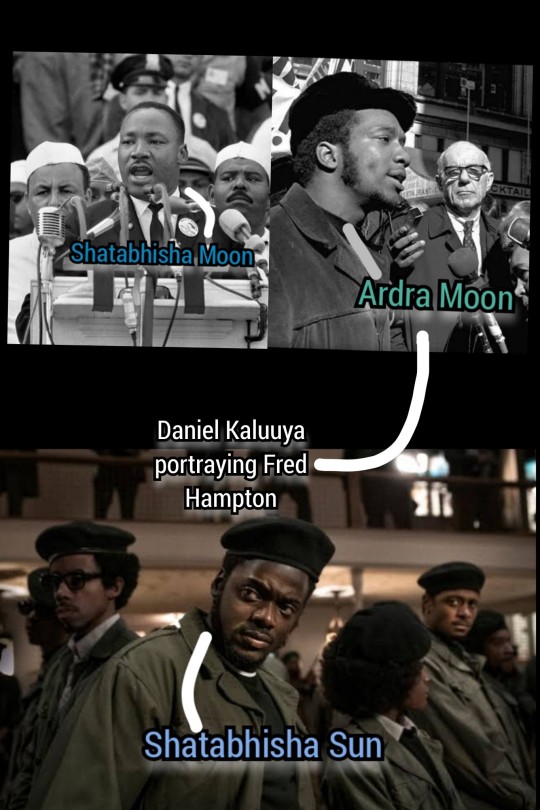


Some examples above of important activist figures who fought societal inequities and inhuman laws in history with Rahu nakshatra/prominent Rahu influence.
Endless desire being birthed from dissatisfaction is a theme also found in Ardra. And that is because of Rudra. Rudra was created from between Brahma's eyebrows as a result of his anger which was triggered by his ignorant passion. The Bhagavad-gītā scriptures describe the essence of Rudra in such a way: Krodha (fury/rage) is the product of kāma (desire/lust), which is the result of ignorant and egocentric passion. It is when the desiring is unsatisfied that rage is born. This causes one to become enslaved by their senses, the material world, and their desires. Such themes manifest through Ardra, which forms a powerful axis with Mula. Mula which kills all desire and ego as it recognizes it as the root of all evil. Mula, who is ruled by the deity Nirrti, who is also known as the ferocious Goddess Kali - slayer of men! Kali grants liberation by removing the illusion of the ego. Emphasizing that we are the eternal I AM and not the body. Goddess Kali is a manifestation of Rudra/Shiva. Though, they oppose one another. Both being ferocious, they are still at two opposite ends of the spectrum. Rudra's rage being driven by desire and the ignorant ego, Kali's rage destroying desire and ego. The two deities ruling the two nakshatras which are at opposite axis of each other, being perfectly paired with the representative shadow planets Rahu and Ketu, which is so fitting.
The most perfect media story that represent these respective energies is the Turkish drama called Aşk-ı Memnu. In which the female lead is played by a Mula Moon and the male lead is played by an Ardra Moon (with a Swati Sun). And the Latin telenovela version of it, Pasión Prohibida, in which the female lead is also played by Mula Moon and the male lead is played by an Ardra Moon again!

The male character in this forbidden love story starts to lust after his uncle's newly wife and eventually she ends up desiring him as well. They both give into their desire and start to have a secret affair which leads to them falling for each other. Their sinful/lustful relationship leads them to misery. The male character, being Ardra, ends up feeling wrongful and rejects her when she proposes them to run away together. She even plans on divorcing his uncle in order to be with him, but now he's choosing to run on a false/illusory moral compass "doing the right thing" (yet he's still hiding the truth from his uncle). Her, being Mula, acknowledges they're in love and is willing to expose everything for them to be together (Ketu being unrealistic and irrational). She realizes her attempts at convincing him are futile, and she ends up killing herself on the day of his wedding to another woman and their affair gets exposed to everyone. She did this knowing it will bring him his very own death. He dies too, figuratively. On the finale, both soap operas show how he is left with absolutely nothing in the world. This being the works of Kali through Mula, killing him and draining him of everything. Because it all started with the Ardra character, he initiated the affair and pushed his lustful advances on her. Rudra, desiring and lusting, only creating his own downfall. So perfectly shown in these soap operas.
Now, Rudra can be the destroyer of desires as well. As he creates misery, he can destroy it. He is the Destroyer, and he acts as a healer. Rudra literally means "one who destroys all problems from their roots", which emphasizes the power of self-liberation. Emphasizing the self-power Rudra holds! And just like Vayu was the bringer of unhappiness, he is also the ones who breathes life and happiness into all living things as well. This shows the dualistic nature in Swati and Ardra, and the power these nakshatras holds.
There seems to be an understanding in self-creation and manifestation in all three of the nakshatras. Vayu is the breather of life and happiness, but also the bringer of misery and death. Rudra is the creator and destroyer of illusions. Varuna being the king of the universe. It's very interesting to find manifestation themes in films that have some Rahu and Rahu nakshatras roles playing around them. Such as the film 13 Going On 30.
13-year-old Jenna, played by Christa B. Allen who has Moon conjunct Rahu, wishes on her birthday to be a successful, beautiful, charismatic 30-year-old version of herself.

And her wish comes true as she wakes up as her desired version, played by Ardra Ascendent Jennifer Garner.

And the film 16 Wishes directed by Swati Sun, Peter DeLuise. A teenage girl has created a list of things she wishes to happen on her 16th birthday and everything manifests exactly the way she wanted.
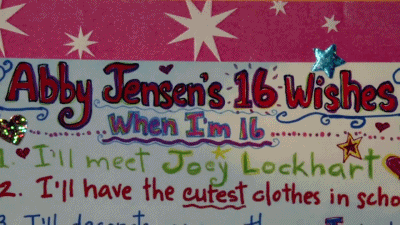
Both stories show the dissatisfaction experienced by the main characters with their manifested desires, which perfectly shows the nature of Rahu. After getting everything they wished for, they still want to go back to the way things used to be before.
Interestingly, the theme of 'trapped in a movie' is something that I found related with Rahu influence. For example, the film The Final Girls is about a young girl, who just lost her mom, getting teleported into a movie starring her mother. The actress playing the young girl is Taissa Farmiga, who has her Moon Rashi Lord in Swati and her Atmakaraka planet in Shatabhisha. And the film is made by Todd Strauss-Schulson who is an Ardra Sun and Swati Moon.

Also, The Truman Show, starring Swati ASC Jim Carrey, who plays a insurance salesman who is oblivious to the fact that his entire life is a TV show watched by the entire world, that everybody around him is an actor — everything around him is a fake simulation.

Then, there these two kdramas, titled "W" and "Extraordinary You". In W, a young woman teleports into a famous web comicbook which was written by her father and meets the main character whom she falls in love with, later realizing that she was the one who created him from a childhood drawing (which her father took inspiration from). He comes to the truth of his nature as a 2D-character and decides to take control of his own destiny from the writer. He is played by Lee Jong-Suk, who is a Shatabhisha Moon. And his love interest who indirectly created him is played by Han Hyo-Joo who is a Shatabhisha Sun.

Then, in Extraordinary You, a high school student realizes on her own that her reality is not real. And she then discovers that she is not only in a comicbook, but she is a background character in which her doomed destiny is decided by the writer. She attempts to change that, wanting to fulfill her desires (Rahu) and dreams of love. She is played by Kim Hye-yoon, who is a Swati Moon. And another character who comes to the realization of the unreality of things (and that he never had a choice in his identity) is played by Lee Jae-wook, who is also a Swati Moon.
Rahu is very much material-world-based, as everything that drives it is purely based on ego and all things of the five senses. It's outwardly chasing, engaging with the world purely on changing it, and attaining desires. Rahu represents the modern-world. Hustle culture, hook-up culture, productivity, transactional relationships, to-do lists, politics, activism etc. All these things that are a part of the human ego's world. It feels real because it's all happening to your ego. But Ketu kills the ego, thus killing the illusions (the world surrounding the ego), and Rahu drives the ego, thus upholding the illusion around it. I mention this very obvious observation as a way to connect all the mentioned films above.
Although it'd be very fitting for Ketu to be the one who awakens you first from the illusions, it is actually Rahu. The films 13 Going On 30 and 16 Wishes showcasing one's attainment of their desires being very unfulfilling and even wanting things to go back to normal - thus appreciating the things you took for granted. It could even go so far as to deciding to walk a spiritual path from all the resulted emptiness from material things. Then that's where Ketu 'welcomes' you.
The very unreality of the world we live in is incredibly Rahuvian, especially the discovery that you were 'never really human' but merely a character. This theme, from a Ketu perspective, suggests that you are Consciousness, and you fooled yourself into believing you were a mere human because of how the world (Rahu) appeared to be so real to your human mind. So "you got lost in the sauce". And the identity you think you are is as unreal as the world, it's all an illusion. Ketu challenges, "If not the body, if not the thoughts, if not the story you've been told, if not the emotions, who am I?" Rahu cannot answer. Rahu can only showcase the unreality of things, such as the Rahu-influenced kdramas I mentioned above; "W" and "Extraordinary You". It is Rahu that causes illusions, and waits for you to break the illusions.
One theme I found interesting and noteworthy which has Rahu/Ketu influence is body swapping. Popular films I found carrying this concept of people's 'souls' switching bodies have an underlying message of understanding someone else by literally walking in their shoes. And also valuing the life you had before, being grateful for what you took for granted, and having a better understanding of other people. The understanding that no one's life, no matter how flashy and stunning it seems, is really perfect or worthy to put on a pedestal. This understanding being mostly showcased in films such as 'The Change-Up' and 'Freaky Friday'.
In Change-Up, two best friends have polarizing lifestyles. One is a busy lawyer who is a responsible father and husband. And the other is an actor who is still a free, bachelor playboy. Both desire each other's lives and a body swap happens, which has them realizing how challenging it is to be each other. Now they want to revert back to their original lives, now valuing what they took for granted. It stars Ryan Reynolds, Swati Moon, and Jason Bateman who has Mars in Swati. In Freaky Friday, a mother and daughter who don't understand each other at all end up body swapping and they learn things they never knew from experiencing each other's lives, which heals their relationship. The film stars Lindsey Lohan who is an Ardra Sun and Jamie Lee Curtis who is Mula ASC.

Then the two films you see on the left are about two pretty teenage girls swapping bodies with unattractive looking, greasy criminals (one a robber, another a murderer). Comedies showing how ludicrous it is for greasy looking, middle-aged, white men to have the soul of a teenage girl, though the movies do show the beautiful bond between friends who can recognize each other even if they were in another body. This likely playing into 7th house and 11th house themes as Hot Chick stars Swati/Libra natives, Rob Schneider & Rachel McAdams. And Freaky starring Shatabhisha/Aquarius natives, Vince Vaughen and Kathryn Newton. (As shown in the visual)

Here are more examples of body swapping movies/tv shows shown above: "Alchemy of Souls (season one)", "Mr Queen", "It's A Boy Girl Thing", "Dating The Enemy", "Secret Garden".
Thank you so much for ending here! Now, onto preparing the next post like this about ketu 🫠 byeeeee.
#ardra#swati#shatabhisha#rahu#rahu nakshatras#nakshatra series#ketu#mula#astrology#vedic astrology#sidereal astrology#vedic observation#sidereal observation#astro observations#astrology observations#sidereal observations#vedic observations#Gemini#Libra#Aquarius#Sagittarius
377 notes
·
View notes
Text
TIG Character Masterlist
Cult of TIG movie drive for your viewing pleasure 🩵
Requests and Asks are always open!
Terry Silver Fics


Silver Thread Universe
Terry Silver x OC Series
Silver Thread - Terry Silver falls hard for Daniel's older sister, Veda LaRusso during the summer of 1985. Set before and during the events of kk2. (Almost enemies to lovers. But mostly fluff. Tons of fluff) (Complete!)
Silver Bells (Silver Thread Sequel)
Silver Bells- Terry Silver and Veda LaRusso end up at the same ski resort during Christmas 10 years after their breakup. Set during December of 1995. (Rekindled Romance, although it was never really over. Is it ever over when it comes to Terry Silver?) (In progress)
Cash Fics


Good Cop, Bad Cop
Good Cop, Bad Cop- Cash heads to his hometown for the first time in nearly twelve years and does everything he can to reclaim his first crush, the girl next door, the one that got away. (a request from @karatekels) (Cash x Reader) (complete)
Kidnapper for Hire
Kidnapper for Hire- Cash is hired to fetch a girl with a big price on her head but for whatever reason can't bring himself to hand her over.
The Birds and the Bees
The Birds and the Bees- Cash Ewing and Shaylee Harris were not only neighbors but also the best of friends. Until that one summer changed everything for them.....(friends to lovers and rekindled / second chance romance)
Valek fics


Valek x OC
Untitled- Valek stumbles upon a girl who bears a striking resemblance to the girl he loved and lost in his days of priesthood.
#thomas ian griffith#terry silver x oc#terry silver#enemies to lovers#cash x reader#jan valek#karate kid#black friday 2007#smut#Doug Brister#Neal Meekin#Terry McCain#terry silver x reader#Valek x OC#jackwild#Gus Travis#Jack Blaylock#max parrish
61 notes
·
View notes
Text
if it didn't get an ova/anime/movie, I didn't include it, so no wish or clover music videos.
you're voting for the best adaptations as a whole. picking trc, for example, includes the original anime + tokyo revelations + shunraiki + the birdcage movie
36 notes
·
View notes
Text
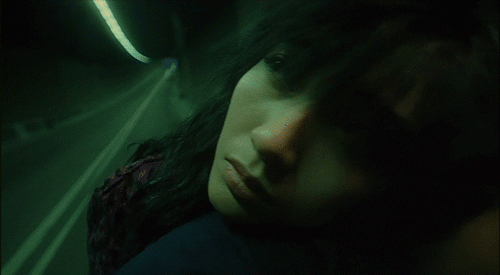
mula + fallen angels (1995)
spoiler warning!
nakshatras as movies i love
Ruled by Nirriti, this nakshatra is best symbolized by The Tower in tarot - the house is in flames and the only way out is through the window. Having Moola in your chart forces you to take leaps constantly. Nirrti is described in the Vedas as "terrifying" to behold - yet is known to be forgiving, bestowing fortune on those capable of living to her values.
To this effect, Mulas share a theme with the Yama-ruled Bharani: destruction is only the beginning. Ketuvian in nature, Mulas must give up the bonds holding them down to truly ascend to their fullest potential. The Sagittarius placement brings to mind a nebula, a graveyard of ancient stars bringing new light and potentially new life into the void. There is deep, incomprehensible beauty in letting go. There are wonders in just letting life's currents carry you elsewhere.
Sharing Prajapati as a ruler with Rohini, both nakshatras become foils - the slash and burn autumnal harvest of Mula forming a delicate symbiosis with the rain-drenched spring sowing of Rohini. Traditionally, it was auspicious to declare war during Moola. Those with this Sagittarius nakshatra often must make the hard decisions in lieu of others.
Ketu, faceless lord of sacrifice and enlightenment, can be an incomprehensible, difficult ruler. The shadow planet is beyond Mercurial speech, beyond Saturnian reason, beyond Solar Ego or Lunar Emotion, Martian will, Venusian desire or Jupiterian fortune. Mula means to "unroot", after all. Mula natives have to close one door to open a better one.
#astrology#astro#vedic#nakshatras#moola#mula#sagittarius#moodboards#aes#wong kar wai#fallen angels#nakshatraboxd
155 notes
·
View notes
Text
I was tagged by @last-smoke, thank you!!
last song: Comfort Eagle by Cake
currently reading: Sisters in Hate by Seyward Darby
last movie: God's Own Country!!
currently watching: Critical Role when I'm doing repetitive crafts, Taskmaster when I need a mood boost
currently craving: sambar! chana masala! and I've got a hankering for veda soup (groundnut soup) as well
currently consuming: I've got some popped corn with nooch!
three ships: TOMJOHN, dorym, griddlehark. and a bonus merthur because I love them. special shoutout to Leliana/fem grey warden!
first ship: ohhhh it's been so long. but probably Oliza/Betia from the Kiesha'ra stories? that was the first where I remember thinking like "oh I wonder if anyone else is into this, I want to read more about it" and as I read the book it turns out they were canon yaaay
favorite color: purple! or blue. I love purple on other things. I love wearing blue!
currently working on: too many fiber arts projects. someday I will write again
i'm tagging 👀 @study-inscarlett @thebeautifulsoup @leastsaid @mrfutureboy @jordenspuls @thinkanamelater
13 notes
·
View notes
Text
The Great CLAMP Re-Read Part 3: Tokyo Babylon
Part 1 (RG Veda) | Part 2 (Man of Many Faces)| Part 4 (Duklyon) | Part 5 (Clamp Detectives)| Part 6 (Shirahime)| Part 7 (X)| Part 8 (Chunhyang) | Part 9 (Miyuki-chan)
The CLAMP 90s series. Perhaps their greatest work ever. Tokyo Babylon ran from 1990 to 1993, concurrent with RG Veda, the CLAMP School, Shirahime, Chun-hyang, AND X. It makes you wonder how X and Tokyo Babylon shaped each other (but more on that later). Tokyo Babylon (and X) is also set in the same universe as the CLAMP School reflecting CLAMP’s early interest in crossovers. Planned out as 7 volumes, it consists of 11 big stories and 3 annexes. I read the omnibus versions which contain lots of coloured art, but the original print run is a beauty in 80s and early 90s graphic design.
While I'd never read this before, it's famous enough (two OVAs, a drama CD, and a live action movie), that I went in knowing some of the big spoilers, but not details. So while my reading was coloured by the knowledge of its tragic end, it still felt revelatory to me. It is the first CLAMP work where I think they had gotten their storytelling pinned down enough to consciously think of how to write a story that ties together on a thematic level, in every stage, and it's phenomenal. Heavy spoilers.
Synopsis: Onmyoji and thirteenth head of the Sumeragi clan, Subaru Sumeragi is called upon to solve occult mysteries in post-bubble Tokyo. It's a time of glittering lights, a rotten economy, and city populated by lonely people desperate for an answer to their problems as the millennium draws near. Joined by his fashionable twin sister Hokuto and the kindly but strangely sinister vetenarian Seishiro Sakurazuka - who is in love with him - the overly sacrificing and empathetic Subaru must solve these problems and learn how to live - but Tokyo is not a kind place, especially to those with gentle natures.
The Story: On its surface, Tokyo Babylon begins as a "case-of-the-week" style story, where Subaru has to solve an occult case and learns something. Its a deceptively simple premise that allowed for CLAMP to explore pressing social issues of their time (which still feel resonant due to the sensitive way they explored them), while also building upon Subaru's character development through this, and the suspense of Seishiro's true nature. We observe Subaru grow through his failures and learn more about the limitations of his empathy. No case feels pointless in how it develops Subaru as a person, and his relationship to Seishiro. The dread we feel about Seishiro's connection to Subaru grows that we almost believe we might just get out of this. It's just excellently plotted out.
The comedy is well-timed and CLAMP know when to pull back from it to allow the emotional aspect to come through. Every case is incredibly gripping and I even cried reading "Old". I have seen some suggest it would have been more effective to have a massive twist rather than seed Seishiro's psychopathy throughout, but I actually think this works on a thematic level, and finding out Seishiro is a murderer, the bet, and Hokuto's death, still hit like a gut punch. It's a brilliant usage of seeding information without the full context until the end. I have no complaints here. It's a poignant story of Tokyo in the early 1990s and its destructiveness, while never losing its humanity.
The Themes: Do you know why the cherry blossoms are red. Tokyo Babylon is a story about well, Tokyo. It's about how modern city living that pursues only personal gain and conformity leads to human loneliness, and loneliness is a trap that destroys us all. We can never know someone else's pain, which leads to loneliness - but to recognize that is also freeing because it means we cannot judge and be judged for it. Having empathy is good, but too much and for the wrong people and not for yourself, can only lead to death. Subaru forms his self-identity through others, in contrast to his self-actualized twin, remaining aloof and detached from his own self - this is why Seishiro's betrayal breaks him, because Subaru doesn't know how to live as his own person. It is also what causes his loved ones so much harm in how little he loves himself in comparison to others.
Its a fascinating interplay between community and individuality, the reality of modern life of trying to be someone while also needing to generalize, without ever really settling on either side. Hokuto is right that they're not the same person, but Subaru is also right that they are deeply connected, as all people must be. Where it does come down hard is that humans are not the villains but Tokyo is, in what it represents - greed, selfishness, cruelty, and apathy. "Things like this happen in Tokyo everyday". It is intensely tragic and yet, strangely, incredibly life-affirming. Despite everything Subaru suffers, people are not born and made evil and everyone should be taken for who they are, not a faceless mass. Including ourselves.
The Characters: Like the plot, everything in the characters is tied into the story of Tokyo. Seishiro is Tokyo: the slick, cool-cut well to do man in a suit with no empathy and a taste for violence. He's Subaru's mirror - charming AND connected to people, and yet not. Nobody is special in Seishiro's eyes, nobody deserves to be treated as anything but an object. And then we have Subaru, poor sweet Subaru who is so empathetic and yet so detached from the world and himself because he's so focused on only his job, on not being an individual. He is what Tokyo wants him to be, filled with self-loathing and frankly suicidal impulses that he shouldn’t be alive if others are not.
It's so tragic to watch Subaru finally grow into a person, but to do so to the one person who will hurt him. Subaru wants to to love Tokyo so badly, that it kills his sister, the one person he SHOULD have been pouring his love into, the person who could love him back and expect nothing in return, the person who would allow him love while not dissolving himself in it. And Hokuto is just a showstopper, funny, kind, witty and cool. She's Subaru's northstar, the empathy and humanity where he cannot, almost co-dependent. I love characters that reflect one another and the themes.
The Art: The visual storytelling and panelling are fantastic. Tokyo Babylon offers a sparser and more distinctly black and white look than RG Veda, with a stronger emphasis on emotional paneling that breaks into beautiful spreads. It creates an almost wood-block, timeless appeal (despite the fashion) that is neither too busy nor too simplified. Anything to do with the Bet and especially the finale is incredible. Subaru surrounded by cherry blossoms? Haunting. The fashion is impeccable, I love the bold design choices in the covers and spreads. The character designs in and of themselves are quite simple (and I don't love the seme-uke look of Seishiro and Subaru), but the personality-costuming is so well done and tell stories themselves. And the use of Hokuto and Subaru being identical to conceal the twist? Masterful character design. My only complaint is some of the scanned photo backgrounds are jarring against the lovely drawn art.
Questionable Elements: Subaru is 16 and Seishiro is 25. That being said, I do think from their interviews and the actual text, we aren't meant to ship them, and it's not unrealistic to be a teen and fall for an older person only for it to majorly fuck you up because they abuse their greater knowledge to harm you (which hey, might be a theme!). Some of the way issues are handled is dated, but not too badly. Again, I’m not going to comment on whether this is queer representation or not, since I don’t think that has ever been CLAMP’s intention. Despite the stereotypical seme and uke stuff, the relationship feels real and tangible (which is why the payoff works). My real gripe is Hokuto getting fridged, though it's handled better than expected (still. let's stop killing women to make men sad).
Overall: A beautiful tragedy and an ode to human alienation, identity, and empathy. I went into this expecting to like it, and ended it never the same. It is genuinely a fantastic, fully complete thematic work from them that speaks as a reflection of the time it was written, and yet remains resonant. I know some people find it edgy, but I actually don't think edge is its intention, it's dark and it's tragic but never misanthropic. Yes, Subaru enters the adult world broken, but his refusal to become like Seishiro and to continue to count himself amongst humanity despite everything, reaffirms that life and people have value (notwithstanding his behaviour in X).
You can see so much of their ideas crystallize here that they’ll repeat across X, Xxxholic, etc. We're all just lonely people and we hurt each other in our loneliness, and it's important to recognize that in ourselves and take care of ourselves for it. We have value as individuals AND through others. Read it!
9 notes
·
View notes
Text

Revenge of the Zombies (1943) - Australian Poster
#revenge of the zombies#john carradine#gale storm#veda ann borg#robert lowery#1940s movies#horror movie poster
44 notes
·
View notes
Text

Another 90s classic:

GIF by yeahthatsinteresting
My Girl was required viewing at every sleepover I ever attended. And Veda was deeply relatable as a kid navigating her increasingly complex world - family, friendships, getting older, who she was versus who she thought she should be.

GIF by out-of-my-head
Veda is a dreamer, a poet, a fierce friend, and - as seen here - a person of strong opinions. I absolutely love this movie. And my love for Anna Chlumsky persists to this day!
2 notes
·
View notes
Text
I have a small request for my mutuals and people i follow. I hope u will understand. I request u all to tag posts related to the new n*clear b*mb movie as *ab*
I am now going to tell u why . Before I say anything I want to say i think making and using that weapon of mass destruction is the most heinous crime against humanity and nature.
Couple of days back I was bored to oblivion and tried to look at the world news headlines. I found a post about the movie that said Hindus r upset over a certain scene. I read the details and immediately regretted. It was beyond shocking for someone who grew up in a home with The Holy Bible , The Vedas and The Koran in the same book shelf and a sub-continent with numerous religious communities, people of all shades of skin color and learned at home and school to respect them all while respecting the religion and culture I was born and brought up into.
I am sure C* topher N*lan and the writers/ whoever is responsible for putting that scene in the movie are some of of the most awful, ugly, filthiest minded creatures ever (like rotting sewerage ). HOW DARE they insult Hinduism and Religious Hindus like that ? HOW DARE THEY INSULT HINDUISM IN THE GROSSEST POSSIBLE WAY IMAGINABLE ? WOULD THEY DARE DOING THE SAME TO ANY OTHER MAJOR RELIGION IN THE WORLD ? NO ,THEY WONT . THEY WOULD BE TERRIFIED OF DOING THAT. THEN WHY HINDUISM ?
NO ONE , NO ONE HAS ANY RIGHT TO INSULT OTHER PEOPLE'S RELIGIOUS BELIEFS IN PUBLIC MEDIA. OR MISREPRESENTING THE RELIGION OR SPREADING MISINFORMATION ABOUT THEM .
CREATIVE LICENSE? SERIOUSLY?
Hollywood seems to have a free license to insult and make fun of Hindus and Hinduism in numerous movies and shows . The fashion industry did that too. Pictures of our deities and most sacred religious symbols everywhere on clothes including shorts and shoes . DO THEY EVEN KNOW THE FIRST THING ABOUT HINDUISM ,ITS SCRIPTURES, DEITIES ,THE GITA AND MONOTHEISM ( AS CLEARLY STATED IN THE GITA) ?
NO ,THEY DO NOT . THEY DON'T CARE HOW RELIGIOUS HINDUS FEEL BY THEIR ACTIONS . BECAUSE THEY THINK RELIGIOUS HINDUS ARE SILLY AND POSSIBLY UNEDUCATED AND TOTALLY UNCULTURED, UNABLE TO FOLLOW FASHION OR INTERNATIONAL MEDIA. AND THEY SHOULD NOT HAVE ANY OPINION OR VOICE ABOUT HOW THEIR RELIGION IS PORTRAYED IN MEDIA .
THEY R SO, SO BRAVE WHILE INSULTING AND MAKING DISPARAGING COMMENTS ABOUT HINDUS AND HINDUISM ON INTERNATIONAL MEDIA. BECAUSE ITS EASY AND WORRY FREE !!!!! SO CONVENIENT! LIKE WOW!
I have no problem with atheism . I understand it and I have nothing against people who are atheists. This is not about that . I want to make this clear.
I liked the actors in the movie before reading this news. They do not want/ respect/ care for religious Hindu fans . Okay . Understood. ( This my opinion only)
The Foreign version of the news also stated Indians watched and ' enjoyed' the movie . I have nothing against those people if that really happened. Maybe they are non religious and don't know anything or care about Hinduism or scriptures or Gita . In my extended family there r some people like that . But that is okay . Religion for me is not something that should be forced to learn or practice . As I know and understand there are different ways of practicing Hinduism .
My question is , how difficult is it for people to respect other people's religious beliefs? My family and plenty of people I know personally and millions I do not know are doing it with ease all their lives . Can tolerant Hindus living all over the world not expect this common civility and simple courtesy extended to them ?
12 notes
·
View notes
Text
The Complete Works of Sri Aurobindo in one PDF


The Complete Works of Sri Aurobindo
The Complete Works of Sri Aurobindo in one PDF. Here on Holybooks.com, you can find all the books of the Indian scholar, yogi, revolutionary and mystic Sri Aurobindo. Some years ago I started uploading the 35 volumes, every single book in a single file. Now I have merged all of them into one single file to make it easier for readers, who just want to download Aurobindo's entire works. So here it is: The complete works of Sri Aurobindo, more than 15.000 pages in one single file. For information about the single books by Sri Aurobindo, please read the individual entries here on the site. For a general introduction to the life and works of Sri Aurobindo, read the Wikipedia entry: https://en.wikipedia.org/wiki/Sri_Aurobindo.
We also have the complete works of The Mother, Mirra Alfassa, Sri Aurobindo's companion de vie, 17 volumes here: https://www.holybooks.com/the-mother-collected-works-volume-1-17/
Download the complete works of Sri Aurobindo here as one huge PDF-file (15.000 pages/39.8 MB):

The Complete Works of Sri Aurobindo
Table of Contents for the books by Sri Aurobindo included in the bundle
1 – Early Cultural Writings
809 – Collected Poems
1578 – Collected Plays and Stories
2596 – Translations
3236 – Bande Mataram
4442 – Karmayogin
4930 – Record of Yoga
6459 – Essays Divine and Human
6990 – Essays in Philosophy and Yoga
7606 – The Secret of the Veda
8222 – Isha Upanishad
8829 – Kena and Other Upanishads
9288 – Essays on the Gita
9895 – The Renaissance in India
10379 – The Synthesis of Yoga
11317 – The Human Cycle, The Ideal of Human Unity, War and Self-Determination
12021 – The Future Poetry
12436 – Letters on Poetry and Art
13217 – Savitri
13980 – Letters on Himself and the Ashram
14852 – Autobiographical Notes and Other Writings of Historical Interest
Thanks to Aether for the Index.
Documentary movie about Sri Aurobindo:
Read the full article
2 notes
·
View notes
Text
part of me wants to make a proper post about setsuna’s controversial characterization in the movie but i also can’t think of any other way to word it beyond “dude is experiencing things NOBODY HAS EVER EXPERIENCED BEFORE AND HE LITERALLY CANNOT ARTICULATE THESE THINGS TO OTHERS BECAUSE THEY HAVE NO FRAME OF REFERENCE AND HE DOESN’T UNDERSTAND THEM IN THE FIRST PLACE”
ALSO, SOMETHING ABOUT THE FUNDAMENTAL LONELINESS OF LITERALLY BEING THE FIRST AND ONLY BEING LIKE YOURSELF. that deserves its own post altogether.
it would not make sense if the innovator/ELS stuff didn’t set him back a bit because 1. it would be shit writing for a change this massive to not affect his character and 2. he’s never actually been good at communicating. he gets better, but he never gets good.
that’s The Thing about setsuna
setsuna becomes devoted to communication and understanding despite struggling to verbally communicate clearly with others throughout the entire show’s runtime
idk man i was sad about it when i first watched the movie but it makes sense. there’s no one to guide him through this. there’s no one he can talk to who Gets it. the person who could probably Get it the most is tieria but tieria’s asleep in Veda
he’s locked up in his own head like he was in s1 for very good reason, but it’s not even like his character development has been undone! the entire movie also demonstrates that!
he’s just struggling, feeling alone. because in a way, he is.
also something something themes of understanding come into play majorly with setsuna in a position where his problems cannot be understood by others
28 notes
·
View notes